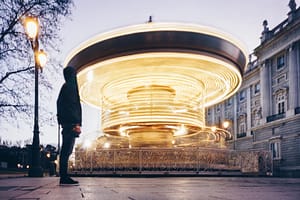Spain has always been known for its craftspeople, many still working in the time-honored and labor-intensive traditions of their grandparents. It’s hard to go wrong if you stick to the beautiful handcrafted Spanish objects — hand-painted tiles, ceramics, and porcelain; hand-woven rugs; handmade sweaters; and intricate embroideries. And, of course, Spain produces some of the world’s finest leather. Jewelry, especially gold set with Majorca pearls, represents good value and unquestioned luxury.
Some of Madrid’s art galleries are known throughout Europe for discovering and encouraging new talent. Antiques are sold in highly sophisticated retail outlets. Better suited to the budgets of many travelers are the weekly flea markets.
Spain continues to make inroads into the fashion world. Its young designers are regularly featured in the fashion magazines of Europe. Excellent shoes are available, some highly fashionable. But American readers, be advised that prices for shoes and quality clothing are generally higher in Madrid than in the United States.
The biggest concentration of antiques shops is Ribera de Curtidores, where the Sunday Rastro market is located. You’ll find a widespread choice in the prestigious Salamanca district, especially on Lagasca and Jorge Juan streets.
The widest selection of art galleries can be found in a trio of streets located in three separate and atmospherically different districts of Madrid: Calle Claudio Coello, in swanky Salamanca (which has the most galleries); Calle Orfila, in sedate Chamberí; and Calle Almirante, in bohemian Chueca. You’ll also find a few near the Reina Sofía.
For the man on a budget who wants to dress reasonably well, the best outlet for off-the-rack men’s clothing is one of the branches of the Corte Inglés department-store chain . Most men’s boutiques in Madrid are very expensive and may not be worth the investment. Note also that many of the stores women’s clothing stores also feature a men’s line.
While on the booming outskirts of the city, and in nearby satellite towns such as Las Rozas and Madahonda, American-style malls and other modern commercial centers may be sprouting up at an alarming rate and superseding the traditional covered market, the latter still reigns supreme in the heart of Madrid. Vibrantly alive and brimming with atmosphere, with its goodies and kaleidoscope of colors it still survives as an indelible reminder of old Spain. As such, it’s well worth taking a stroll around one whether you buy anything or not. Just to reassure yourself that some things never change, here are five prime examples.
Many visitors to Spain are already familiar with the Zara clothing label. Now with over 1,000 (2,500, counting the Zara offshoot brands) outlets in 70 countries, including megastores in the fashion capitals of Milan, Paris, London, and New York, Zara is hard to ignore. But many are not aware and may be surprised to know that Zara is Spanish-owned.
Zara was started back in the early ’70s by an industrious young Galician by the name of Amancio Ortega, now the richest man in Spain. Today, Zara is one of the few fashion empires in the world that vertically controls the entire process, from textile manufacture to design to retail. Using a global network of buyers and trend-spotters, they interpret (many within the industry use the word “plagiarize”) hot-off-the-catwalk pieces for men, women, and children at astoundingly affordable prices. They appeal to the full cross-generational demographic gamut, from urban tribes to executives.

